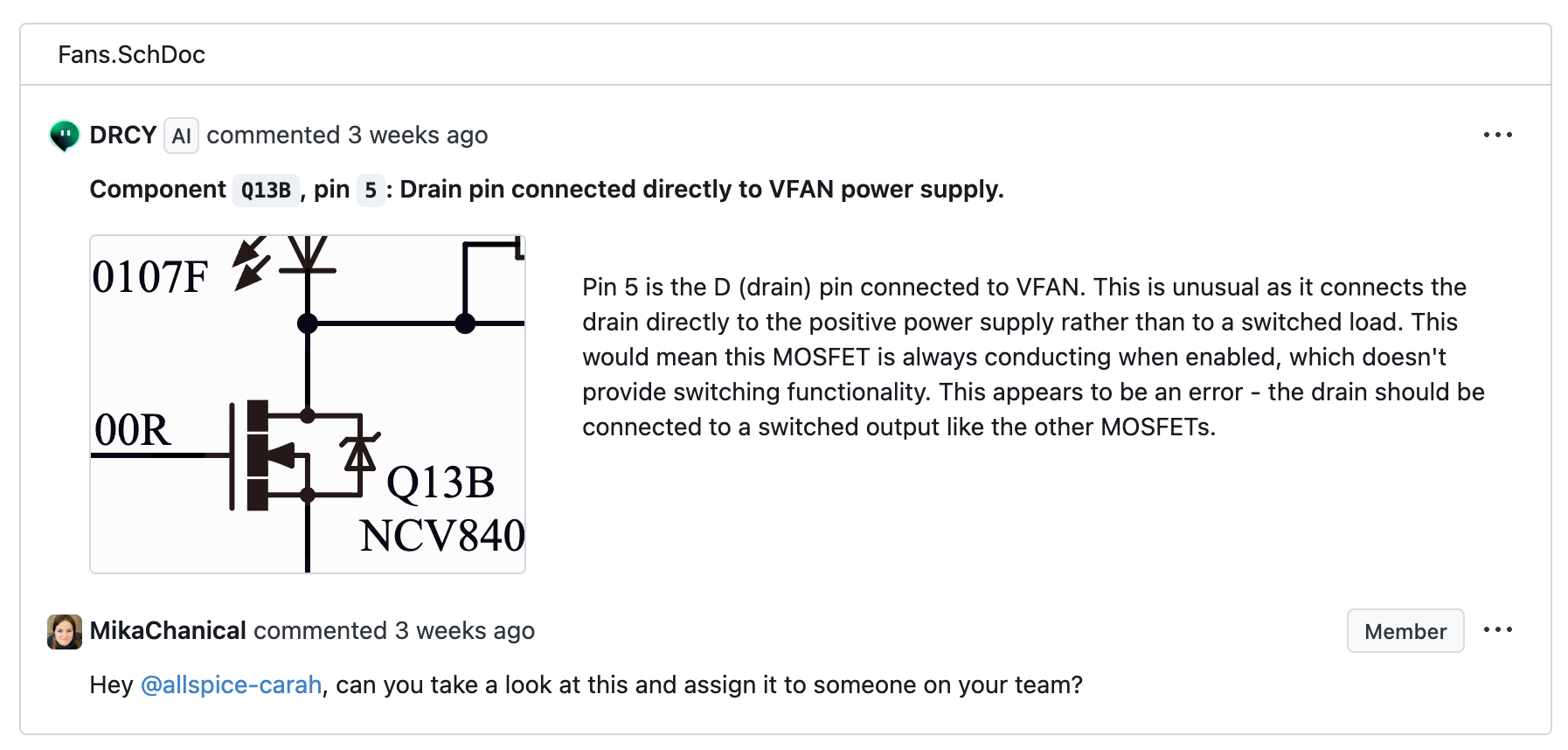The old defenses
Traditionally, the defenses against this kind of process escape haven’t been pretty.
- more people spending more time reviewing with manual checks
The team
Mei, an electrical engineering manager, remembers the manual printout review era: schematic printouts, a netlist, three different attribute lists, and a six-pack of highlighters. Six hours later, she still isn’t confident the team caught everything.
Paul, a hardware design engineer, has lived through the spreadsheet stage. Instead of red pens, he had color-coded cells. Better than paper, sure—but not by much. A missed copy-paste was still enough to tank a board.
Even today’s “modern” reviews can look like Eric’s nightmare as director of engineering efficiency: ten engineers in a room, spreadsheets on a projector, and everyone silently hoping the right person spots the wrong footprint.
And when the design slips through? Vicky, the VP of hardware engineering, is the one explaining to the C-suite why a single attribute mismatch just cost three months of schedule and missed a delivery window.
Enter AI
AI changes the math. Instead of trusting memory, manual checks, and caffeine, you can automate the grunt work and free your team to focus on design.
Automated checklist
Instead of highlighters and spreadsheets, AI verifies every BOM attribute against PLM and vendor datasheets—long before it gets near HALT.
Example: AI pulls the datasheet for a TI regulator, sees that the thermal pad requires via stitching, and flags that the current footprint doesn’t meet spec.
Design review assistant
Ask AI to build power tables, run preliminary heat/power checks, and package the results into reusable templates.
Example: AI parses the schematic, generates a power dissipation table, which the engineer can add to the team’s review template so the next project starts with the same baseline.
Layout review
AI checks layout and placement rules, flagging issues while you’re still moving components around.
Example: while Paul the engineer is placing parts, AI shows which components are too close based on CM manufacturing rules.
Duplicate fields
(Mfg vs. Manufacturer), missing attributes, misordered CSVs—AI catches them instantly.
Example: AI notices two capacitor entries that are the same part number but spelled differently, merges them, and pushes a cleaned BOM back into PLM via API. Eric gets a perfect report with zero manual edits.
Test driven design
Test engineers don’t just need boards—they need ways to *prove* boards work. AI can suggest test strategies for each component, generate starter code for those tests, and even estimate coverage percentages.
Example: AI sees an I²C temperature sensor on the BOM, generates Python test code that checks read/write registers, and reports 85% coverage of sensor functionality.
Hardware-to-firmware bridge
Mapping pins and nets to firmware registers has always been tedious. AI can auto-generate mapping files that connect board components to firmware routines and server-side APIs.
Example: AI parses the netlist, outputs a C header file with register definitions for the MCU, and simultaneously generates a JSON schema so the server team can read/write those registers through an API.
The engineer who never sleeps
Think of AI as the engineer who never gets tired. It doesn’t replace Paul’s design skills, Mei’s leadership, Eric’s efficiency playbook, or Vicky’s strategic oversight—but it sits beside them, quietly checking every line, cross-referencing every datasheet, and generating the boring scaffolding that nobody wants.
Everyday AI workflow: before vs. after
Everyday confidence
The problems are endless—attribute mismatches, missing part numbers, inconsistent naming conventions. But the fixes don’t have to be. For Vicky, AI-backed processes mean fewer budget surprises. For Mei, smoother buy-in from her team. For Paul, fewer late nights. And for Eric, proof points he can measure and share.
Everyday AI isn’t about replacing engineers. It’s about killing the busywork so you can design with confidence—and hitting deadlines without burning out.
Further reading
AI for IC footprint geometry — Research on how large language models can interpret IC mechanical drawings to automatically understand footprint geometry, pin layouts, and dimensions. Perfectly aligned with the “wrong footprint” example in this chapter.
LLM-aided hardware design automation — A comprehensive look at how AI can assist with HDL generation, code debugging, verification, and physical implementation. Reinforces the idea of AI as a “design review assistant” and a driver of faster iteration cycles.
AI-automated BOM generation — Industry piece explaining how AI can streamline bill-of-materials creation by cross-checking components, sourcing data, and syncing with vendor databases. See “Automated checklists” and BOM cleanup sections.
RPA + AI for BOM automation — Practical discussion of how robotic process automation and AI can eliminate repetitive tasks in manufacturing BOM workflows, from attribute matching to system synchronization. See “The engineer who never sleeps”.



